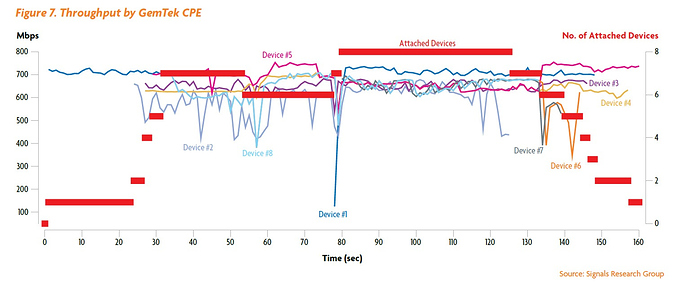Ericsson engineers tuned one week the position of the 8 UEs for a 40 seconds test. ![]()
Where special UEs from GemTEk more like CPE with large separated antenna so they were able to get 2x2 DL MIMO for each of the 8UEs.
Amazing speed.
In LTE with mMIMO I remember 700 Mbps is big deal with 16 layers.
This is very hard to see in real life, I would say almost impossible.
Never ever in live network possible.
It’s only showcase cases.
MuMIMO only 2 UE can be in pairing max time.
That is vendor limitation I think.
No. It’s how UE spread in cell.
Whatever you do 2 UEs max time.
Report (SF MU-MIMO) shows that 8 UEs were paired in same time each UE using 215 PRBs so a total of 1700 PRBs were used.
MU-MIMO UE pairing depend on various factors.
Each UE in pairing use same PRB or RBG.
Yes, and this report states that 8 UEs use same PRB in same time but in different spatial location.
The MCS was not 27 due to interference between beams and was just around 23-21.
Different location mean served by different beams.
Which scheduling algo used depends.
Yes but were simulatneous beams.
8 simultaneous beam each beam having 2 layers : +45 and -45.
1 beam = 2 layer.
So 8 = 16 layers.
Yes very different. 
So for me is a clear show-off this test case and a proof of concept that it is possible.
But in real life users will not be so nicely spread out, MIMO will not be 2x2 for all UEs and so ON.
Seems link a point to point link.
User’s location is the key ingredient for MU-MIMO and also the antenna gain and difference between main beam and side lobes.
I remember Huawei had same recommendations for NR max throughput.
Each 4RX antenna of the UE had to have a special location based on traces from OSS beam based.
Lot of work before getting the best locations.
Sometime months, weeks but no surety.


